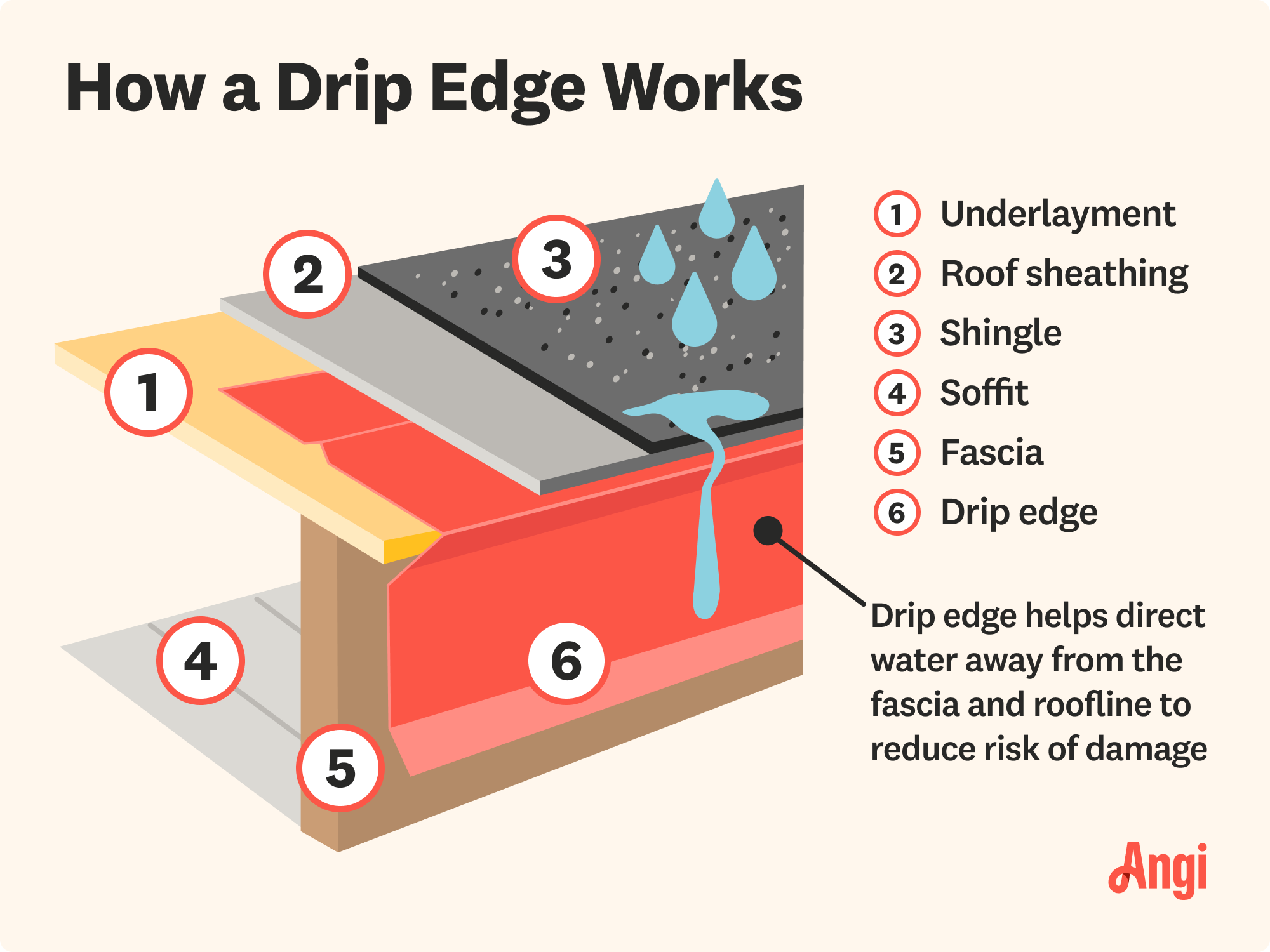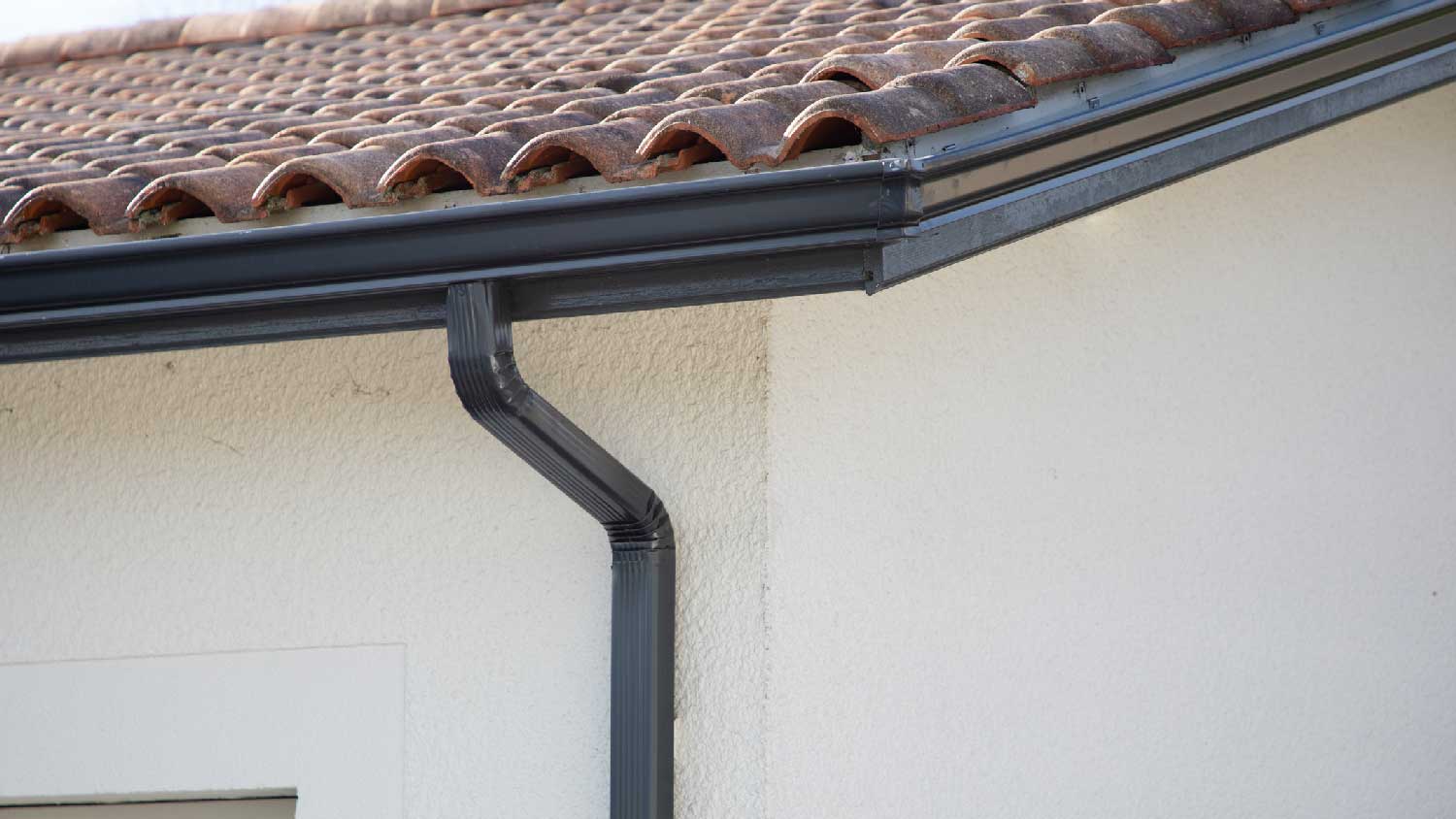
The cost to install wood soffit depends on your roof’s size and the location of the soffit. Learn why it isn’t just the expensive materials that impact cost.
Don’t let your next rainy day get you down


A drip edge can enhance your roof’s longevity and curb appeal.
Installing a drip edge costs an average of $575, but can run between $150 and $1,000.
A drip edge prevents water damage by directing water away from the fascia and shingles, helping avoid costly repairs from rot or leaks.
Not installing a drip edge could lead to water seepage under shingles, along with mold and rot.
If you live somewhere with lots of rainy days, installing a drip edge can make a world of difference to your roof’s health. A drip edge keeps water from seeping under your roof and saturating it—an issue that could quickly lead to mold and rot. But you may wonder if it’s possible to add a drip edge on your home’s roof without totally replacing your roof. The good news is yes, you can. Here’s what you need to know about installing a drip edge on an existing roof.
A drip edge is a metal or plastic strip installed along the edges of a roof, designed to direct water away from the fascia and prevent it from seeping under the roofing materials. It sits beneath the shingles and extends slightly beyond the edge of the roof, allowing water to drip off and flow into the gutters. The drip edge helps protect the roof’s structure, including the fascia, soffits, and siding, from water damage and also helps prevent issues like wood rot and mold.

If you’re on the fence about whether or not your home can benefit from a drip edge, consider these advantages and disadvantages.
Prevents water damage: A drip edge helps direct water away from the fascia and roofline, reducing the risk of water damage to the underlying structure.
Protects roofing materials: It helps prevent water from seeping under shingles, which can cause deterioration and leaks.
Enhances roof longevity: A drip edge safeguards the fascia and soffits, prolonging the life of your roof and preventing costly repairs down the road.
Improves aesthetic appeal: A drip edge provides a clean, finished look to the edges of your roof, adding to the overall curb appeal of your home.
Helps with gutter function: It can also improve the function of gutters by ensuring water flows directly into them, reducing the risk of overflowing.
Additional cost: While relatively affordable, installing a drip edge still adds to the cost of roof repairs or replacements, ranging from $150 to $1,000.
Potential for damage during installation: If not installed correctly, the process could cause damage to shingles or gutters, especially if they need to be adjusted or removed.
Labor-intensive for DIYers: Installing a drip edge can be a challenging task for those without roofing experience, requiring precision to ensure proper water flow and alignment.

Even if you’re an avid DIYer, it’s always best to hire a roof repair professional near you for any roofing project. They have the skills and tools necessary to do the job properly—and safely.
But if you’re an advanced DIYer and have prior experience working on a roof, start by inspecting the roof edges to ensure the fascia and soffits are in good condition. If you find any issues, you may need to pause here to make repairs before proceeding. Measure the length of the roof edges and cut the drip edge strips to fit.
Place the drip edge along the roof's edge, positioning the flange (the part that faces the fascia) to direct water away from the roof. Nail the drip edge in place, ensuring the nails are spaced about eight to 10 inches apart, but avoid puncturing the shingles or fascia.
If you're working on multiple roof edges, overlap the strips at the corners for a seamless fit. Check that the drip edge is aligned correctly and securely fastened. After installation, inspect the drip edge to ensure it directs water into the gutters properly and will protect your roof from water damage.
From average costs to expert advice, get all the answers you need to get your job done.

The cost to install wood soffit depends on your roof’s size and the location of the soffit. Learn why it isn’t just the expensive materials that impact cost.

Raising the roof in your home can add character and intrigue, as well as living space. Use this guide to learn the cost to raise a roof, as there are expenses you may not have considered.

Raising the roof on a Cape Cod house adds valuable living space. Learn how much it costs to raise the roof on a Cape Cod house and what affects the price.

Understanding the available types of roof trusses helps you create the desired shape and support for your roof. Learn more about the different options.

Homeowners can fill a gap between their roof and wall with sealant or wire mesh. Here are three steps to help you get the project done safely.

Are you trying to pick a soffit and fascia material for your roof? Here are 10 options for the right finishing touch on your house.